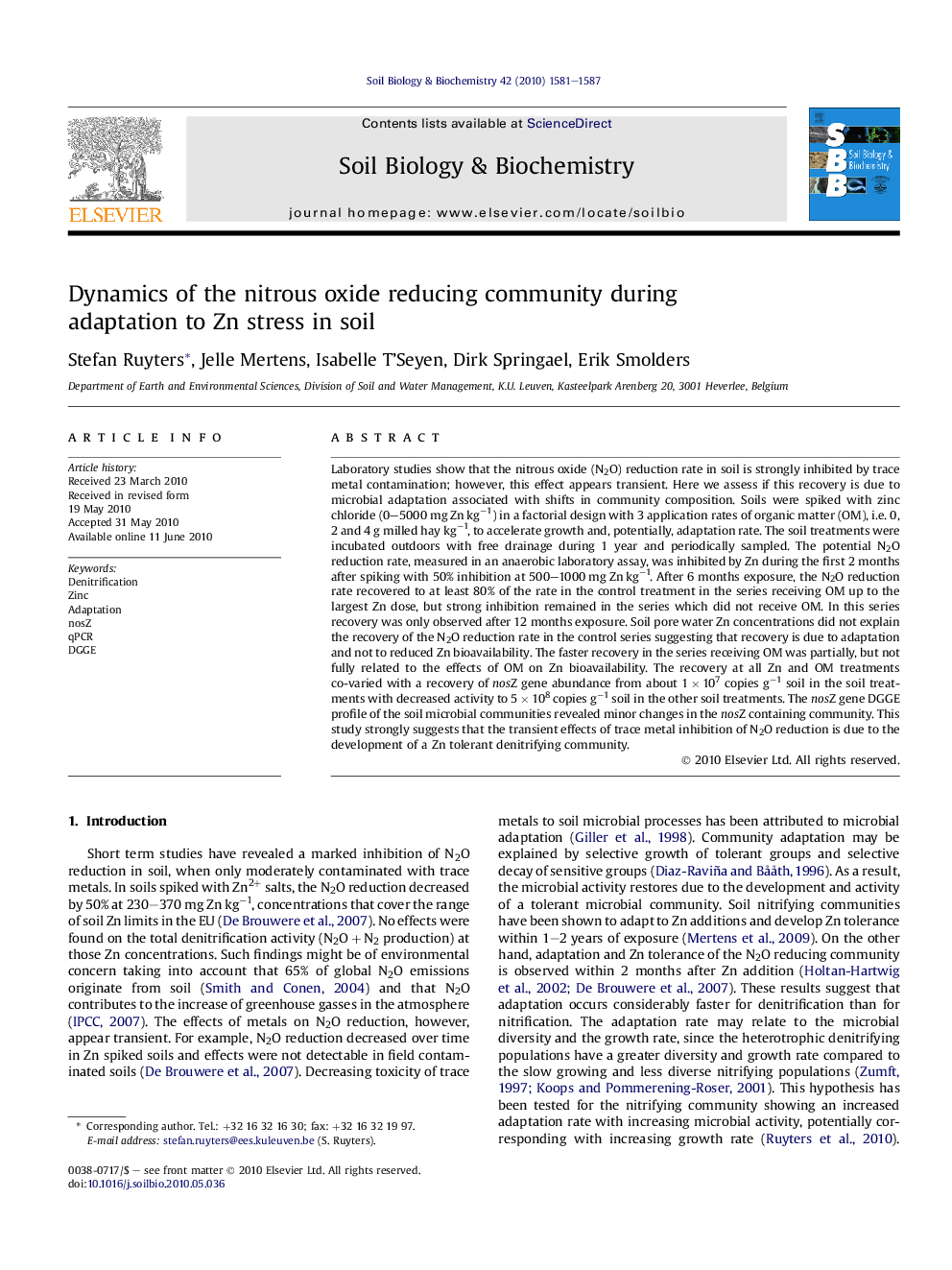| کد مقاله | کد نشریه | سال انتشار | مقاله انگلیسی | نسخه تمام متن |
|---|---|---|---|---|
| 10846128 | 1070002 | 2010 | 7 صفحه PDF | دانلود رایگان |
عنوان انگلیسی مقاله ISI
Dynamics of the nitrous oxide reducing community during adaptation to Zn stress in soil
دانلود مقاله + سفارش ترجمه
دانلود مقاله ISI انگلیسی
رایگان برای ایرانیان
کلمات کلیدی
موضوعات مرتبط
علوم زیستی و بیوفناوری
علوم کشاورزی و بیولوژیک
دانش خاک شناسی
پیش نمایش صفحه اول مقاله

چکیده انگلیسی
Laboratory studies show that the nitrous oxide (N2O) reduction rate in soil is strongly inhibited by trace metal contamination; however, this effect appears transient. Here we assess if this recovery is due to microbial adaptation associated with shifts in community composition. Soils were spiked with zinc chloride (0-5000 mg Zn kgâ1) in a factorial design with 3 application rates of organic matter (OM), i.e. 0, 2 and 4 g milled hay kgâ1, to accelerate growth and, potentially, adaptation rate. The soil treatments were incubated outdoors with free drainage during 1 year and periodically sampled. The potential N2O reduction rate, measured in an anaerobic laboratory assay, was inhibited by Zn during the first 2 months after spiking with 50% inhibition at 500-1000 mg Zn kgâ1. After 6 months exposure, the N2O reduction rate recovered to at least 80% of the rate in the control treatment in the series receiving OM up to the largest Zn dose, but strong inhibition remained in the series which did not receive OM. In this series recovery was only observed after 12 months exposure. Soil pore water Zn concentrations did not explain the recovery of the N2O reduction rate in the control series suggesting that recovery is due to adaptation and not to reduced Zn bioavailability. The faster recovery in the series receiving OM was partially, but not fully related to the effects of OM on Zn bioavailability. The recovery at all Zn and OM treatments co-varied with a recovery of nosZ gene abundance from about 1 Ã 107 copies gâ1 soil in the soil treatments with decreased activity to 5 Ã 108 copies gâ1 soil in the other soil treatments. The nosZ gene DGGE profile of the soil microbial communities revealed minor changes in the nosZ containing community. This study strongly suggests that the transient effects of trace metal inhibition of N2O reduction is due to the development of a Zn tolerant denitrifying community.
ناشر
Database: Elsevier - ScienceDirect (ساینس دایرکت)
Journal: Soil Biology and Biochemistry - Volume 42, Issue 9, September 2010, Pages 1581-1587
Journal: Soil Biology and Biochemistry - Volume 42, Issue 9, September 2010, Pages 1581-1587
نویسندگان
Stefan Ruyters, Jelle Mertens, Isabelle T'Seyen, Dirk Springael, Erik Smolders,